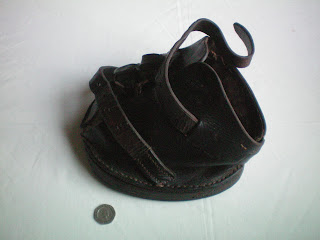Until the invention of the lawn mower by Edwin Budding in 1831 the lawns of stately homes would have been maintained by gangs of men with scythes, often referred to as ‘mowers’. They would be followed up by women and children who were employed to collect the mowings.
It is believed Edwin Budding, from Stroud in Gloucestershire, gained his inspiration for the lawn mower from a device used to remove the nap from cotton fabric. Large cotton mills would, at this time, have been the largest industry in the town.
Budding’s first lawn mower was a 19” push-mower. The cutting cylinder was driven using gears and chains from the back roller. Although now it would be considered ample for the modern garden, it was not for a large estate. The demand for a larger machine was required and although the Budding’s design was increased in size it still did not cater for the larger estates.
In Scotland
After this success Shanks and his son James went on to create larger mowers which were very successful and the company was eventually bought by Armitage Shanks.
Ever since I wrote my dissertation at RHS Wisley on the mechanisation of the lawn mower I have wanted to own one of these horse boots.
As I admire this curio, I ask the questions: from which estate/property would this boot have been from? For how long did the pony work? Was this from the only set the pony used?

.JPG)

I have just bought some of these boots to put in our visitor and education centre at the equine rescue centre I work at in Lincolnshire. As yet I am waiting to receive them in the post and cannot wait to see them on show with some information for the visitors to explain what they were used for. Interesting items
ReplyDelete